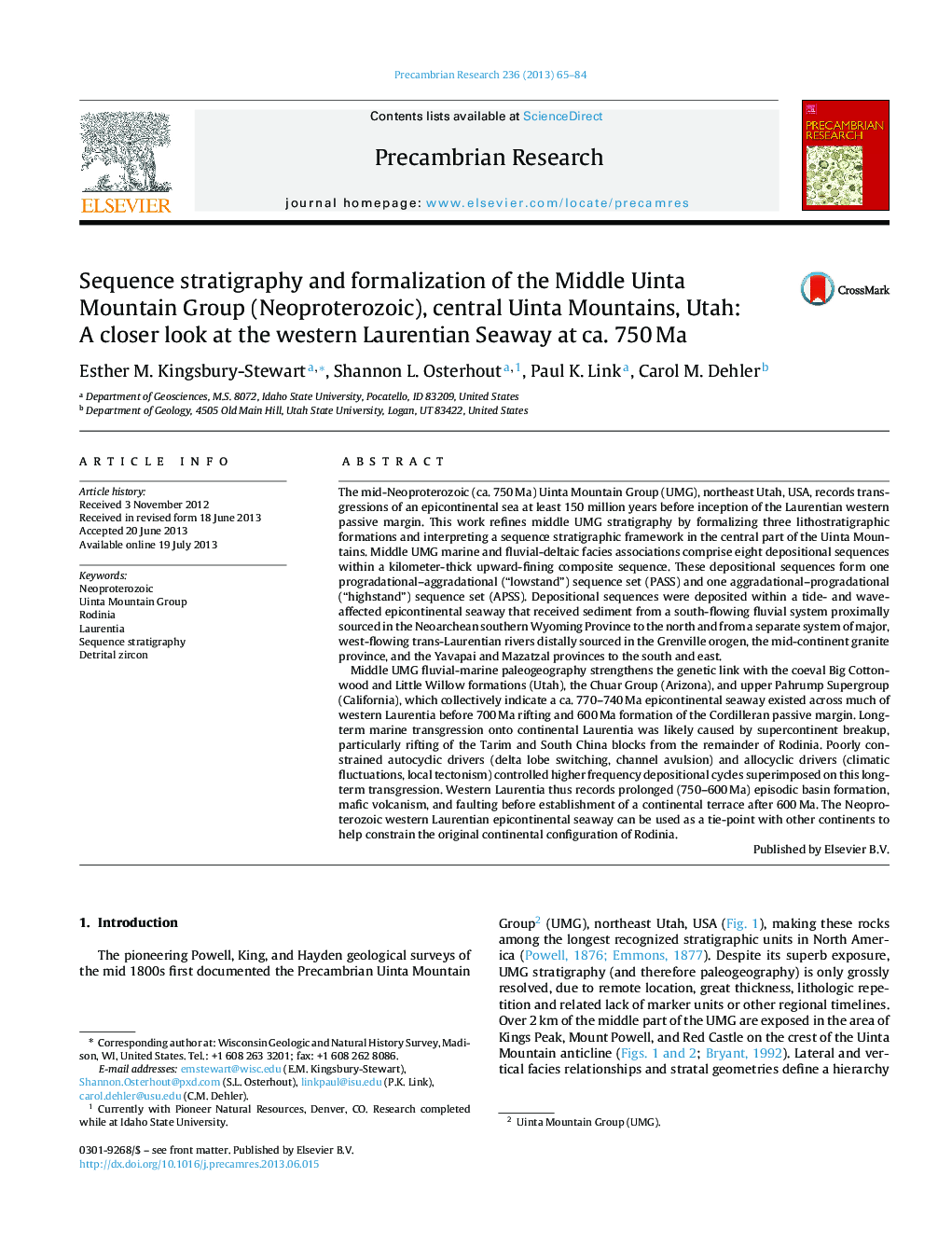| کد مقاله | کد نشریه | سال انتشار | مقاله انگلیسی | نسخه تمام متن |
|---|---|---|---|---|
| 4723166 | 1639638 | 2013 | 20 صفحه PDF | دانلود رایگان |

• We formally define 3 UMG formations to facilitate mapping and correlation.
• We document sequence stratigraphy of the ∼750 Ma Uinta Mountain Group (UMG).
• UMG strata record 8 depositional sequences deposited in a Laurentian epeiric sea.
• Detrital zircons and lithofacies refine UMG marine through fluvial paleogeography.
• A Laurentian epeiric sea existed ∼150 Ma prior to inception of the passive margin.
The mid-Neoproterozoic (ca. 750 Ma) Uinta Mountain Group (UMG), northeast Utah, USA, records transgressions of an epicontinental sea at least 150 million years before inception of the Laurentian western passive margin. This work refines middle UMG stratigraphy by formalizing three lithostratigraphic formations and interpreting a sequence stratigraphic framework in the central part of the Uinta Mountains. Middle UMG marine and fluvial-deltaic facies associations comprise eight depositional sequences within a kilometer-thick upward-fining composite sequence. These depositional sequences form one progradational–aggradational (“lowstand”) sequence set (PASS) and one aggradational–progradational (“highstand”) sequence set (APSS). Depositional sequences were deposited within a tide- and wave-affected epicontinental seaway that received sediment from a south-flowing fluvial system proximally sourced in the Neoarchean southern Wyoming Province to the north and from a separate system of major, west-flowing trans-Laurentian rivers distally sourced in the Grenville orogen, the mid-continent granite province, and the Yavapai and Mazatzal provinces to the south and east.Middle UMG fluvial-marine paleogeography strengthens the genetic link with the coeval Big Cottonwood and Little Willow formations (Utah), the Chuar Group (Arizona), and upper Pahrump Supergroup (California), which collectively indicate a ca. 770–740 Ma epicontinental seaway existed across much of western Laurentia before 700 Ma rifting and 600 Ma formation of the Cordilleran passive margin. Long-term marine transgression onto continental Laurentia was likely caused by supercontinent breakup, particularly rifting of the Tarim and South China blocks from the remainder of Rodinia. Poorly constrained autocyclic drivers (delta lobe switching, channel avulsion) and allocyclic drivers (climatic fluctuations, local tectonism) controlled higher frequency depositional cycles superimposed on this long-term transgression. Western Laurentia thus records prolonged (750–600 Ma) episodic basin formation, mafic volcanism, and faulting before establishment of a continental terrace after 600 Ma. The Neoproterozoic western Laurentian epicontinental seaway can be used as a tie-point with other continents to help constrain the original continental configuration of Rodinia.
Journal: Precambrian Research - Volume 236, October 2013, Pages 65–84